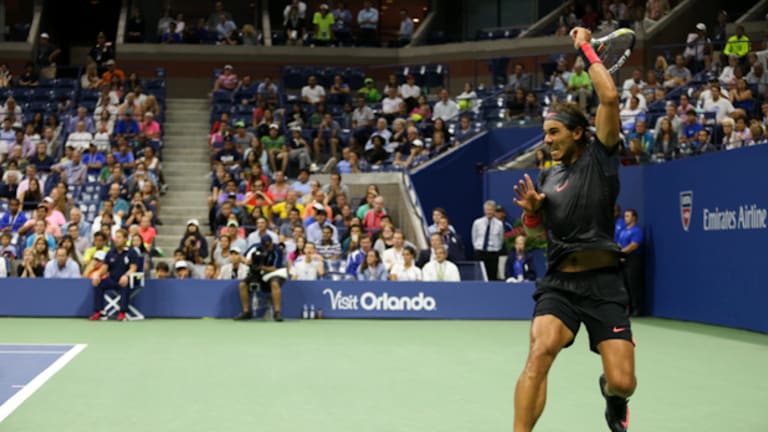We believed you, Fabio. By the time the final set began, it was after midnight, and the crowd in Ashe Stadium had begun to move closer to the court. This year’s evening sessions at the Open were even glitzier than they had been in the past, and this match offered the best example. Ashe's new roof allowed the tournament to install more lights and Jumbotrons; and the echo off the top structure made the pounding, between-games music louder than ever.
This is how I described the fifth set of Fognini-Nadal the next day:
“With no prepration or effort or worry or even knee bend, standing straight up and down and keeping his body completely still, Fognini swung his racquet and the ball simply exploded. Fans gasped and roared. Italian tennis writers spun around in their chairs to look at each other, bug-eyed in disbelief. At that hour, deep in Queens, Ashe Stadium, with its new roof and blaring music and dancing fans, felt like some kind of enchanted island, or tennis-party spaceship, where the game is always unreal.
Fognini dominated the rallies, but he wasn’t the only one providing the entertainment. Rafa, as he will, fought against the fifth-set ground-stroke tsunami. He ran as he always runs, tried every spin and angle he could, and was carried along by a crowd that chanted his name.”
Afterward, the tennis press, Italian and non-Italian alike, was wired and smiling as we boarded the 3:00 A.M. bus and left a still-glowing Ashe Stadium behind. This is what I typed when I got back to Manhattan:
“There’s a memory of a peak point from the fifth set. Nadal and Fognini had run each other all of the court, and slugged and stabbed at the ball with abandon. Each shot brought the fans an inch closer to the edge of their seats; it felt as if everyone was moving toward the court as the point went on. Nadal had it won, Fognini had it won, Nadal had it won—until, finally, Fognini won it for real with a drop volley.
Fognini didn’t need to hit that last shot quite as short as did, or put quite as much mustard on it as he did, or send it as low over the net as he did. But he did all of those things anyway; because there were thousands of people watching, because it was 1:00 in the morning in New York City, because he could do whatever he wanted on this night. Before the ball had bounced twice, it felt like the entire stadium was out of its seat and up in the air.”
The tennis-party spaceship had gone into orbit.
